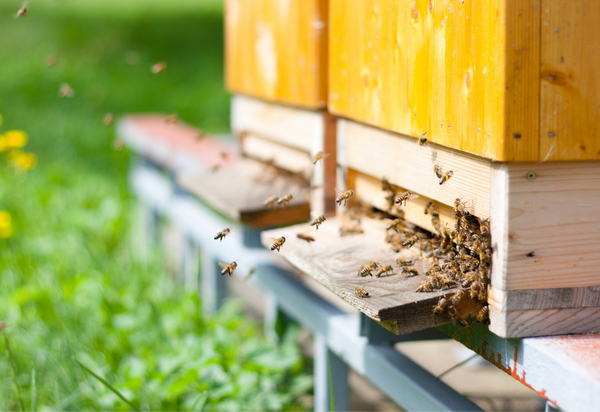Every jar of Honey New Zealand honey is labelled with numbers which show the strength of its UMF and MGO content and confirm it is genuine Manuka honey.
Want to know exactly what it all means? We asked the experts to explain what the numbers stand for and why they are on the label.

What is an MGO rating?
The large number on the front of every jar of Honey New Zealand honey is its UMF and MGO rating – which shows the strength of the honey’s antimicrobial activity.
MGO is short for methylglyoxal, the naturally-occurring chemical unique to honey made from nectar gathered from the Manuka bush. Scientific tests have shown this chemical has antimicrobial properties and the more the honey contains, the greater its bug-fighting power1.
How do we know what rating each jar of honey has?
Dr Young Mee Yoon, Chief Technical Officer at Honey New Zealand, explains: “The rating is established through a scientific chemical analysis which looks at four different chemicals present in the honey. The results tell us the activity level of the honey.
“We test all our honey to establish its UMF and MGO level, first in New Zealand and then again in an independent laboratory when it arrives in the UK, which means we can guarantee the rating stated on the label is correct and true to label.”
New Zealand Manuka Honey Science Definition
Each jar of Honey New Zealand honey carries labels confirming the honey meets the strict definition of Manuka honey set by the New Zealand Government and is “Tested Certified Manuka”.
This means each batch has been tested at an independent laboratory for five key markers which prove the honey was made from nectar gathered by bees from the Manuka bush. The markers are made up of four naturally-occurring chemicals and one DNA marker from Manuka pollen.
Monofloral or multifloral
Our jars also state the honey is “monofloral”. This tells you the honey is made predominantly from nectar from the Manuka bush (monofloral) rather than from a combination of Manuka and other flowers (multifloral).
Independent testing establishes how much of each of the five markers are in each batch of honey – and these results are used to determine it is monofloral Manuka honey. Typically, monofloral products contain higher levels of the natural chemicals associated with the Manuka bush.
What’s the science behind the official definition of New Zealand Manuka honey?
There are five key markers which identify whether Manuka honey is monofloral or multifloral. The first four are chemical markers known as phenolic acids. Their full names are called 3-Phenyllactic acid, 2-Methoxyacetophenone, 2-Methoxybenzoic acid and 4-Hydroxypheyllactic acid – so you can see why we can’t fit them on our labels!
Instead, every Honey New Zealand jar displays the minimum levels it contains of each of the chemicals, referred to by their shortened names: 3-PLA, 2-MAP, 2-MBA and 4-HPLA.
For honey to be classed as “monofloral” it has to contain at least 400mg/kg of 3-PLA and 5mg/kg of 2-MAP, as well as at least 1mg/kg of the other two chemicals.
All honey which is exported from New Zealand as “Manuka” must also contain a DNA marker from Manuka pollen, which confirms it has come from the bush. This is why every Honey New Zealand jar also states: “DNA < Cq 36” – this is a scientific way of saying the presence of Manuka DNA has been confirmed by independent laboratory testing.
How are the tests done?
Only two independent laboratories in New Zealand are approved by the NZ Government to carry out independent testing of these five Manuka markers.
Jonno Hill is CEO of one the approved labs, Hill Laboratories. He says: “We test for the four chemical markers using a Government-recommended chemical analysis technique called LC-MS (liquid chromatography–mass spectrometry). It’s a highly analytical technique which is expensive but very reliable and wonderfully precise and scientific, so it is free from interferences which could give inaccurate results.
“For the DNA testing we use an analytical technique called quantitative PCR, which is also Government-recommended. We use it for a range of services in the business and it’s a technology which is very well established and there a high degree of confidence in its accuracy.”






